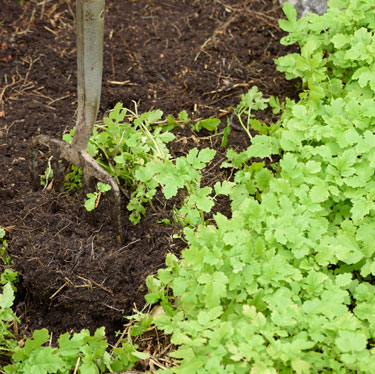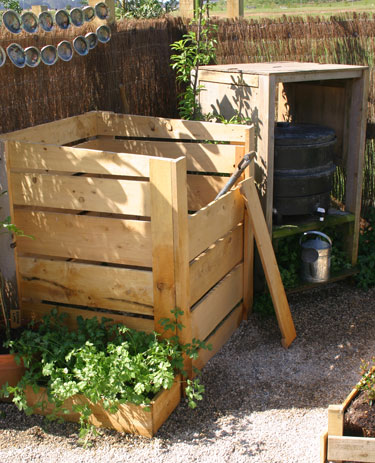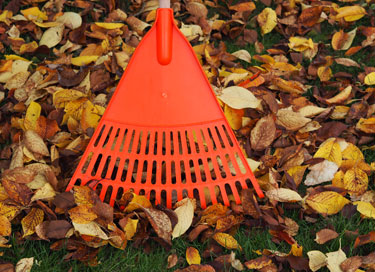Improving the root zone
Eight simple ways to improve your soil
Healthy soil means healthy plants and a beautiful thriving garden. A healthy soil containing ample organic matter contains billions of active micro organisms which build soil structure, make nutrients available for plants and can even reduce pest and disease problems.
But what can a gardener do when faced with a soil that’s less than ideal? Whether you have poor sandy soil, heavy clay or a lifeless patch of compacted over-cultivated ground, there is plenty you can do to improve it over time.
1. Add compost
Compost becomes humus, that magical black spongy stuff that all good soils contain. Humus improves water and nutrient retention in sandy soils. In heavy soils humus particles latch on to fine clay particles to form nutrient rich soil ‘crumbs’ that hold water in their micropores while letting excess water can drain away, leaving the all important air spaces behind.
2. Cover bare soil
Don’t leave your soil exposed to the ravages of rain, wind, and sun. A layer of organic mulch in the form of straw, wood chip, bark, compost or anything else that breaks down into humus acts like the forest floor. Mulching blocks weeds and prevents moisture loss by evaporation, but most importantly it will add value to your soil in the form of humus.
3. Apply gypsum
Gypsum is a time honoured product used to reduce the density of heavy soils, improving water movement and nutrient uptake. The calcium component of gypsum encourages the soil clay particles to group together, thereby improving soil structure.
4. Use organic fertilisers
Some fertilisers are useful as a fast tonic, but they provide nutrients without adding to the long term health of the soil. Bulky organic fertilisers provide both nutrients and humus. They release their nutrients slowly so there is less risk of nitrogen leaching into ground water faster than plant roots can absorb them.
5. Dig less
Digging is what gardeners do but some of us dig more than we need to. For the sake of the soil, if you don’t need to dig, don’t. Every time we dig we risk damaging some of the soil’s structure and disrupting the precious ecosystem of micro organisms working to build soil structure and supply plant roots with nutrients. Especially avoid digging straight after rainy weather when the soil is heavy and wet.
6. Grow your own manure
A green manure or cover crop is sown in autumn or early winter and then chopped down and incorporated into the soil in spring, restoring organic matter, earthworms and beneficial micro organisms. As well as providing bulk nitrogen, it will help bring deep minerals to the surface. Over winter a cover crop protects the soil from heavy weather and as the roots grow they keep the soil aerated and reduce compaction. Cover crops also help break disease cycles. Effective cover crops include lupin (good for nitrogen fixing), mustard, wheat, barley and oats. All provide different plant benefits and a mixture is often sown.
7. Start a worm farm
Even if you have a compost heap, a worm farm is a worthwhile addition to your recycling system. It is a great way to recycle kitchen scraps and produced a ready supply of liquid fertiliser plus worm castings which are a valuable source of nutrients and soil humus that can be used either on the garden soil or added to container mixes.
8. Add humates
Humates occur naturally in the humus we add to our gardens via composting, mulching or adding organic manures. And these days you can buy humates in a bag. Increasingly used by farmers, humates assist the uptake of nutrients, prevent soil cracking, improve moisture retention and help prevent erosion.
What are Humates?
Dave Whitteker of ‘Humate Solutions’ explains the power of Humates.
Whether your livelihood depends on growing crops or pasture, creating the right soil conditions for optimum growth is vital. And that’s where humates come in.
When combined with fertiliser programmes, humates have been shown to provide a significant increase in crop yields and pasture production. They can improve root development, total leaf area and total crop yields per hectare.
The material greatly improves soil quality and releases locked-in minerals for uptake by plants. When mixed with fertiliser or lime, humates hold on to those nutrients until plants require them, reducing loss into the environment.
Humates have been shown to consistently improve the uptake of nutrients such as nitrogen, phosphorus and iron, as well as all the trace elements essential for plant health.
Life forms such as bacteria and earthworms, which depend on humus content, contribute strongly to the maintenance of the soil structure and the use of humates can also prevent soil cracking, which exposes roots to the air and can cause crops to burn in severe heat conditions. Since organic matter is not water soluble, soil with high humus content is less likely to be subject to water erosion.
Humates can hold up to 20 times their weight in water and by enhancing the soil’s ability to retain water, can reduce the need for crop irrigation.
Growers who use humates can usually cut back on fertiliser, especially nitrogen, by up to 25 per cent. In many cases it is possible to cut back 50 per cent or more on phosphate. That’s because use of humates promotes more and deeper root growth and increased biological activity to release nutrients.

1-Aug-2017

Digging in a mustard green crop

A purpose built compost bin designed for easy access and with gaps for good air circulation.

TIP: Save those leaves! They are second to none for composting and mulch.

